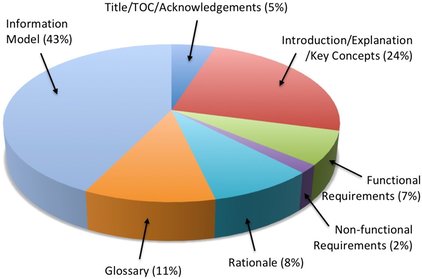One of our design goals with MoReq2010® was simplicity and we’ve worked hard to achieve it. We have removed extraneous requirements from the core services and more clearly defined important processes such as disposal and export.
Even taking into account necessary plug-in modules, we have reduced the number of requirements in the core specification that a records system must comply with by 50%, compared to the previous edition. In fact, only around 10% of the specification is taken up by the functional and non-functional requirements (17% including the rationale to each requirement).
We have also made it easier to define a suitable records system for any given organisation by eliminating the previous practice of interleaving mandatory, desirable and conditional requirements. All requirements in MoReq2010® are mandatory within any given service or module. This means that a records system can be easily defined by simply listing the modules that are required in addition to the core services. Previously this meant working through dozens of desirable and conditional requirements to fully define a suitable records system for an organisation.

There is a quotation attributed to Albert Einstein that, “Everything should be made as simple as possible, but no simpler.” While we think that we have kept MoReq2010® as simple as possible, the reality is that the discipline of records management, by its nature, can be quite complex.
Because of this, we have intentionally increased the size of the document to include a much higher proportion of explanatory text. MoReq2010® is an international specification and we want to make sure that it is clear and accessible by people new to records management, people reading it who do not have English as their first language, and the diligent translators who work hard to bring MoReq2010® to as many different languages, countries and cultures as possible.
To achieve this, in addition to the introductory chapter there is a comprehensive section on key concepts at the head of each service and module; there are around three times as many diagrams, in colour, to accompany this text; we have completely revamped the non-functional requirements; we have included nearly five times as many terms and their definitions in the glossary; and we have a far more comprehensive and robust information model, including for the first time function definitions in addition to entities and metadata elements.
To illustrate this, the pie chart shown here gives a proportional breakdown of what is in the 463 pages of core services in version 1.0 of MoReq2010®. We hope you like what we have done with it!
